Made in Taiwan? How a Frenchman Fooled 18th-Century London
April 18, 2018
Books & History
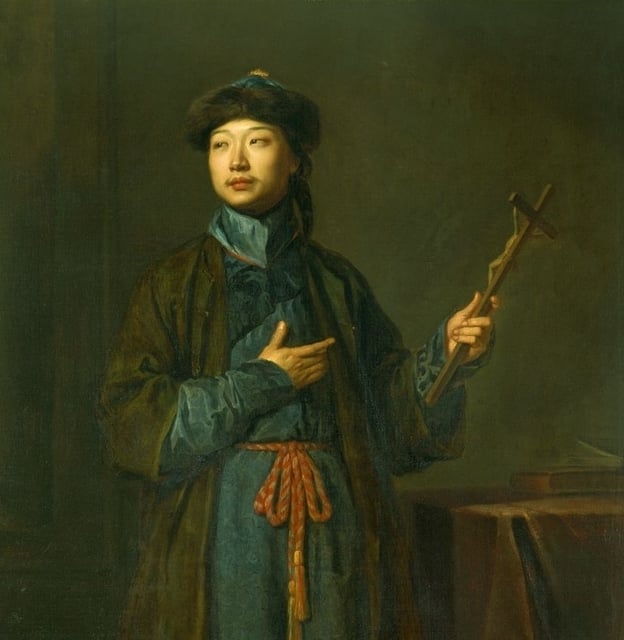 Benjamin Breen on the remarkable story of George Psalmanazar, the mysterious Frenchman who successfully posed as a native of Formosa (now modern Taiwan) and gave birth to a meticulously fabricated culture with bizarre customs, exotic fashions, and its own invented language.
Fallen Angels: Birds of Paradise in Early Modern Europe
April 4, 2018
Art & Religion
Benjamin Breen on the remarkable story of George Psalmanazar, the mysterious Frenchman who successfully posed as a native of Formosa (now modern Taiwan) and gave birth to a meticulously fabricated culture with bizarre customs, exotic fashions, and its own invented language.
Fallen Angels: Birds of Paradise in Early Modern Europe
April 4, 2018
Art & Religion
 When birds of paradise first arrived to Europe, as dried specimens with legs and wings removed, they were seen in almost mythical terms — as angelic beings forever airborne, nourished by dew and the “nectar” of sunlight. Natalie Lawrence looks at how European naturalists of the 16th and 17th centuries attempted to make sense of these entirely novel and exotic creatures from the East.
Pens and Needles: Reviving Book-Embroidery in Victorian England
March 21, 2018
Books & Art
When birds of paradise first arrived to Europe, as dried specimens with legs and wings removed, they were seen in almost mythical terms — as angelic beings forever airborne, nourished by dew and the “nectar” of sunlight. Natalie Lawrence looks at how European naturalists of the 16th and 17th centuries attempted to make sense of these entirely novel and exotic creatures from the East.
Pens and Needles: Reviving Book-Embroidery in Victorian England
March 21, 2018
Books & Art
 Fashionable in the 16th and 17th century, the art of embroidering unique covers for books saw a comeback in late 19th-century England, from the middle-class drawing room to the Arts and Crafts movement. Jessica Roberson explores the bibliomania, patriotism, and issues around gender so central to the revival.
“Alas, Poor YORICK!”: The Death and Life of Laurence Sterne
March 7, 2018
Literature
Fashionable in the 16th and 17th century, the art of embroidering unique covers for books saw a comeback in late 19th-century England, from the middle-class drawing room to the Arts and Crafts movement. Jessica Roberson explores the bibliomania, patriotism, and issues around gender so central to the revival.
“Alas, Poor YORICK!”: The Death and Life of Laurence Sterne
March 7, 2018
Literature
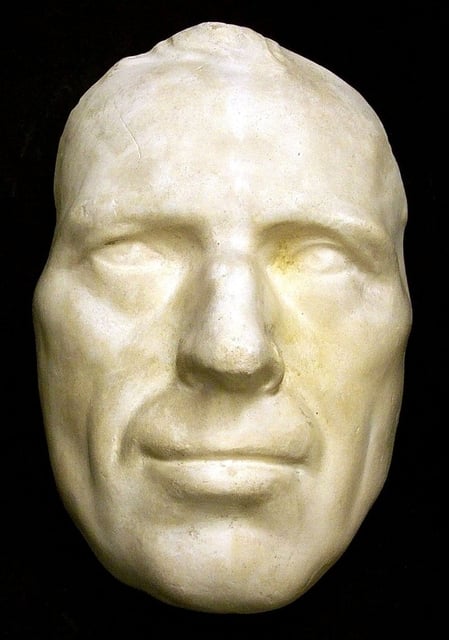 On the 250th anniversary of Laurence Sterne’s death, Ian Campbell Ross looks at the engagement with mortality so important to the novelist’s groundbreaking work.
Darwin’s Polar Bear
February 21, 2018
Science
On the 250th anniversary of Laurence Sterne’s death, Ian Campbell Ross looks at the engagement with mortality so important to the novelist’s groundbreaking work.
Darwin’s Polar Bear
February 21, 2018
Science
 Musings upon the whys and wherefores of polar bears, particularly in relation to their forest-dwelling cousins, played an important but often overlooked role in the development of evolutionary theory. Michael Engelhard explores.
Illustrating Carnival: Remembering the Overlooked Artists Behind Early Mardi Gras
February 7, 2018
Art & History
Musings upon the whys and wherefores of polar bears, particularly in relation to their forest-dwelling cousins, played an important but often overlooked role in the development of evolutionary theory. Michael Engelhard explores.
Illustrating Carnival: Remembering the Overlooked Artists Behind Early Mardi Gras
February 7, 2018
Art & History
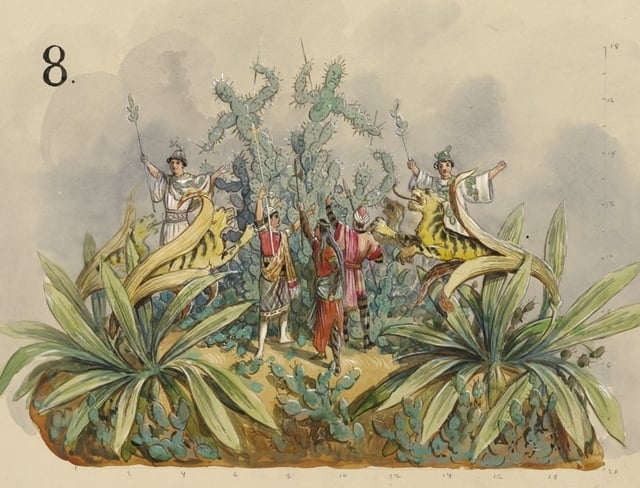 For more than 150 years the city of New Orleans has been known for the theatricality and extravagance of its Mardi Gras celebrations. Allison C. Meier looks at the wonderfully ornate float and costume designs from Carnival’s “Golden Age” and the group of New Orleans artists who created them.
The Dreams of an Inventor in 1420
January 24, 2018
Science & Art
For more than 150 years the city of New Orleans has been known for the theatricality and extravagance of its Mardi Gras celebrations. Allison C. Meier looks at the wonderfully ornate float and costume designs from Carnival’s “Golden Age” and the group of New Orleans artists who created them.
The Dreams of an Inventor in 1420
January 24, 2018
Science & Art
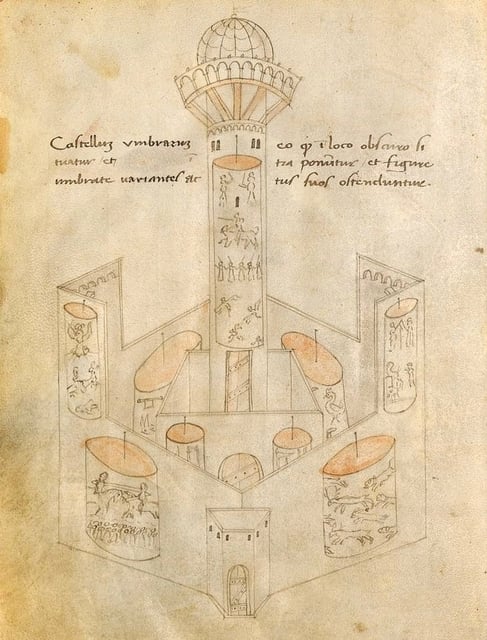 Bennett Gilbert peruses the sketchbook of 15th-century engineer Johannes de Fontana, a catalogue of designs for a variety of fantastic and often impossible inventions, including fire-breathing automatons, pulley-powered angels, and the earliest surviving drawing of a magic lantern device.
Yvette Borup Andrews: Photographing Central Asia
January 10, 2018
Photography
Bennett Gilbert peruses the sketchbook of 15th-century engineer Johannes de Fontana, a catalogue of designs for a variety of fantastic and often impossible inventions, including fire-breathing automatons, pulley-powered angels, and the earliest surviving drawing of a magic lantern device.
Yvette Borup Andrews: Photographing Central Asia
January 10, 2018
Photography
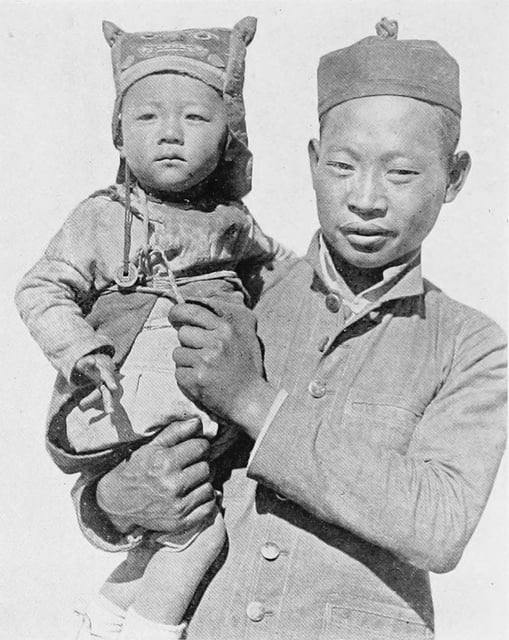 Although often overshadowed by the escapades of her more famous husband (said by some to be the real-life inspiration for Indiana Jones), the photographs taken by Yvette Borup Andrews on their first expeditions through Central Asia stand today as a compelling contribution to early visual anthropology. Lydia Pyne looks at the story and impact of this unique body of images.
Pods, Pots, and Potions: Putting Cacao to Paper in Early Modern Europe
December 7, 2017
Science & Art & History
Although often overshadowed by the escapades of her more famous husband (said by some to be the real-life inspiration for Indiana Jones), the photographs taken by Yvette Borup Andrews on their first expeditions through Central Asia stand today as a compelling contribution to early visual anthropology. Lydia Pyne looks at the story and impact of this unique body of images.
Pods, Pots, and Potions: Putting Cacao to Paper in Early Modern Europe
December 7, 2017
Science & Art & History
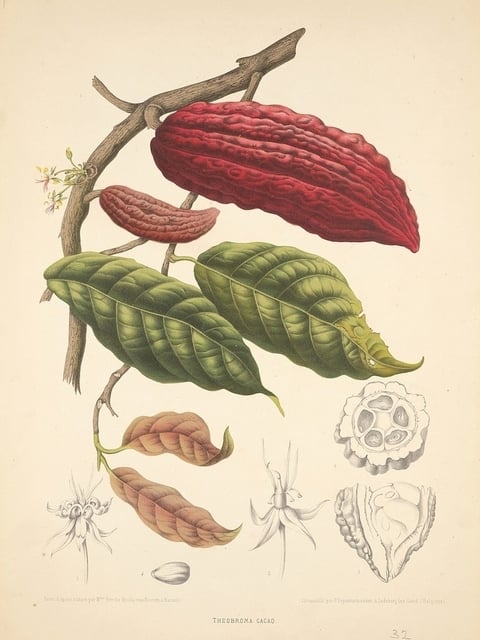 Christine Jones explores the different ways the cacao tree has been depicted through history — from 16th-century codices to 18th-century botanicals — and what this changing iconography reveals about cacao’s journey into European culture.
Brief Encounters with Jean-Frédéric Maximilien de Waldeck
November 22, 2017
Art & History
Christine Jones explores the different ways the cacao tree has been depicted through history — from 16th-century codices to 18th-century botanicals — and what this changing iconography reveals about cacao’s journey into European culture.
Brief Encounters with Jean-Frédéric Maximilien de Waldeck
November 22, 2017
Art & History
 Not a lot concerning the artist, erotic publisher, explorer, and general enigma Count de Waldeck can be taken at face value, and this certainly includes his fanciful representations of ancient Mesoamerican culture which — despite the exquisite brilliance of their execution — run wild with anatopistic lions, elephants, and suspicious architecture. Rhys Griffiths looks at the life and work of one of the 19th century’s most mysterious and eccentric figures.
Flash Mob: Revolution, Lightning, and the People’s Will
November 9, 2017
Art & History
Not a lot concerning the artist, erotic publisher, explorer, and general enigma Count de Waldeck can be taken at face value, and this certainly includes his fanciful representations of ancient Mesoamerican culture which — despite the exquisite brilliance of their execution — run wild with anatopistic lions, elephants, and suspicious architecture. Rhys Griffiths looks at the life and work of one of the 19th century’s most mysterious and eccentric figures.
Flash Mob: Revolution, Lightning, and the People’s Will
November 9, 2017
Art & History
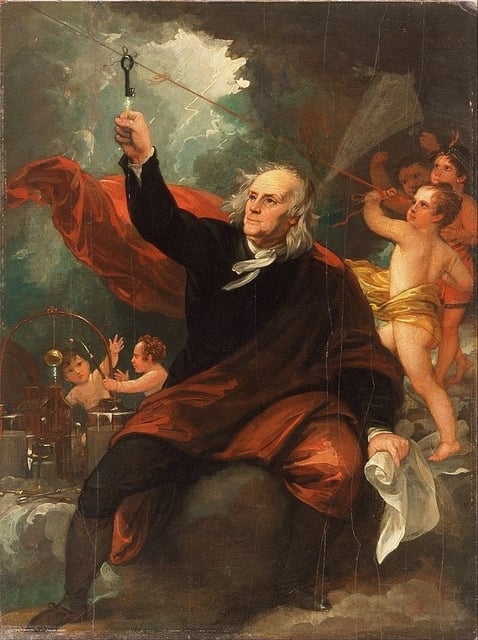 Kevin Duong explores how leading French revolutionaries, in need of an image to represent the all important “will of the people”, turned to the thunderbolt — a natural symbol of power and illumination that also signalled the scientific ideals so key to their project.
Defining the Demonic
October 25, 2017
Books & Art & Religion
Kevin Duong explores how leading French revolutionaries, in need of an image to represent the all important “will of the people”, turned to the thunderbolt — a natural symbol of power and illumination that also signalled the scientific ideals so key to their project.
Defining the Demonic
October 25, 2017
Books & Art & Religion
 Although Jacques Collin de Plancy’s Dictionnaire infernal, a monumental compendium of all things diabolical, was first published in 1818 to much success, it is the fabulously illustrated final edition of 1863 which secured the book as a landmark in the study and representation of demons. Ed Simon explores the work and how at its heart lies an unlikely but pertinent synthesis of the Enlightenment and the occult.
Race and the White Elephant War of 1884
October 11, 2017
History
Although Jacques Collin de Plancy’s Dictionnaire infernal, a monumental compendium of all things diabolical, was first published in 1818 to much success, it is the fabulously illustrated final edition of 1863 which secured the book as a landmark in the study and representation of demons. Ed Simon explores the work and how at its heart lies an unlikely but pertinent synthesis of the Enlightenment and the occult.
Race and the White Elephant War of 1884
October 11, 2017
History
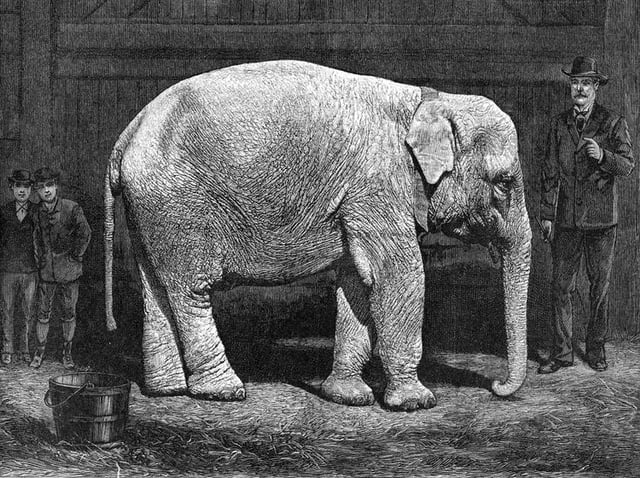 Feuding impresarios, a white-but-not-white-enough elephant, and racist ads for soap — Ross Bullen on how a bizarre episode in circus history became an unlikely forum for discussing 19th-century theories of race, and inadvertently laid bare the ideological constructions at their heart.
Master of Disaster, Ignatius Donnelly
September 27, 2017
Books & Literature & Science & Religion
Feuding impresarios, a white-but-not-white-enough elephant, and racist ads for soap — Ross Bullen on how a bizarre episode in circus history became an unlikely forum for discussing 19th-century theories of race, and inadvertently laid bare the ideological constructions at their heart.
Master of Disaster, Ignatius Donnelly
September 27, 2017
Books & Literature & Science & Religion
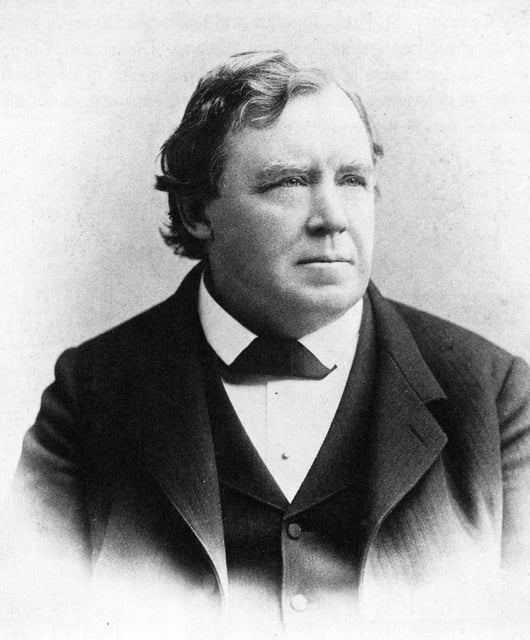 The destruction of Atlantis, cataclysmic comets, and a Manhattan tower made entirely from concrete and corpse — Carl Abbott on the life and work of a Minnesotan writer, and failed politician, with a mind primed for catastrophe.
Human Forms in Nature: Ernst Haeckel’s Trip to South Asia and Its Aftermath
September 13, 2017
Science & Art
The destruction of Atlantis, cataclysmic comets, and a Manhattan tower made entirely from concrete and corpse — Carl Abbott on the life and work of a Minnesotan writer, and failed politician, with a mind primed for catastrophe.
Human Forms in Nature: Ernst Haeckel’s Trip to South Asia and Its Aftermath
September 13, 2017
Science & Art
 An early promoter and populariser of Darwin’s evolutionary theory, the German biologist and artist Ernst Haeckel was a hugely influential figure of the late 19th century. Bernd Brunner looks at how a trip to Sri Lanka sowed the seeds for not only Haeckel’s majestic illustrations from his Art Forms in Nature, for which he is perhaps best known today, but also his disturbing ideas on race and eugenics.
Rescuing England: The Rhetoric of Imperialism and the Salvation Army
August 16, 2017
Books & Religion
An early promoter and populariser of Darwin’s evolutionary theory, the German biologist and artist Ernst Haeckel was a hugely influential figure of the late 19th century. Bernd Brunner looks at how a trip to Sri Lanka sowed the seeds for not only Haeckel’s majestic illustrations from his Art Forms in Nature, for which he is perhaps best known today, but also his disturbing ideas on race and eugenics.
Rescuing England: The Rhetoric of Imperialism and the Salvation Army
August 16, 2017
Books & Religion
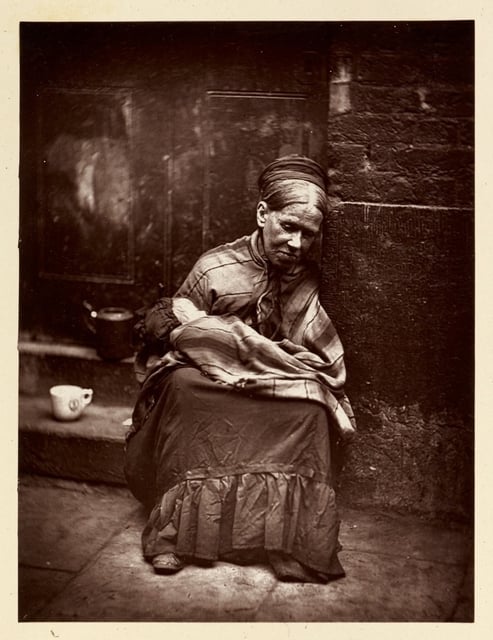 Ellen J. Stockstill on how William Booth, founder of the Salvation Army, placed the ideas and language of colonialism at the very heart of his vision for improving the lives of Victorian England’s poor.
Out From Behind This Mask
July 27, 2017
Philosophy & Art & History
Ellen J. Stockstill on how William Booth, founder of the Salvation Army, placed the ideas and language of colonialism at the very heart of his vision for improving the lives of Victorian England’s poor.
Out From Behind This Mask
July 27, 2017
Philosophy & Art & History
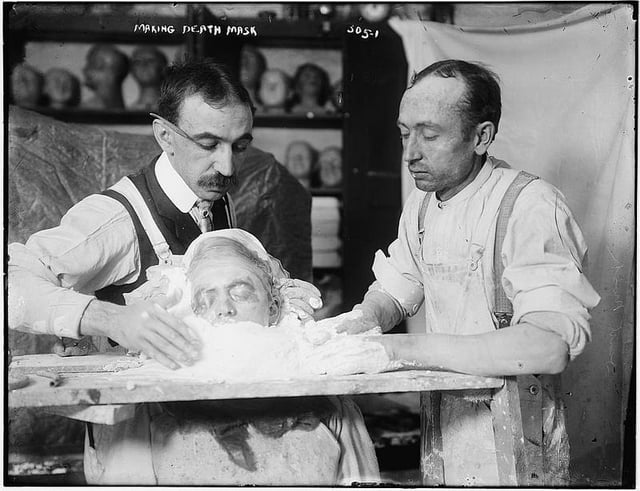 A Barthesian bristle and the curious power of Walt Whitman’s posthumous eyelids — D. Graham Burnett on meditations conjured by a visit to the death masks of the Laurence Hutton Collection.
Inventing the Recording
July 12, 2017
Music
A Barthesian bristle and the curious power of Walt Whitman’s posthumous eyelids — D. Graham Burnett on meditations conjured by a visit to the death masks of the Laurence Hutton Collection.
Inventing the Recording
July 12, 2017
Music
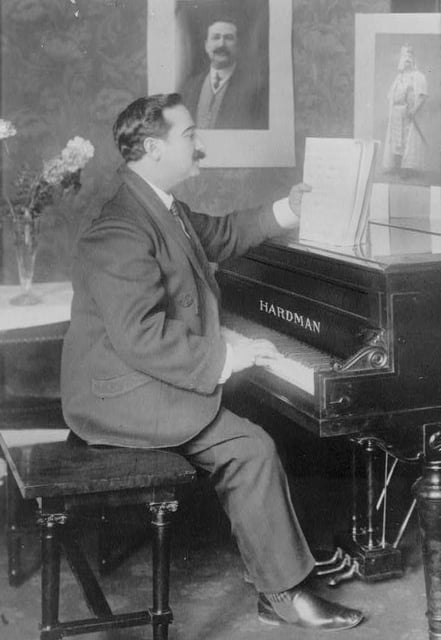 Eva Moreda Rodríguez on the formative years of the recording industry, focusing on the culture surrounding the gabinetes fonográficos of fin-de-siècle Spain.
Decoding the Morse: The History of 16th-Century Narcoleptic Walruses
June 14, 2017
History & Religion
Eva Moreda Rodríguez on the formative years of the recording industry, focusing on the culture surrounding the gabinetes fonográficos of fin-de-siècle Spain.
Decoding the Morse: The History of 16th-Century Narcoleptic Walruses
June 14, 2017
History & Religion
 Amongst the assorted curiosities described in Olaus Magnus’ 1555 tome on Nordic life was the morse — a hirsuite, fearsome walrus-like beast, that was said to snooze upon cliffs while hanging by its teeth. Natalie Lawrence explores the career of this chimerical wonder, shaped both by scholarly images of a fabulous north and the grisly corporeality of the trade in walrus skins, teeth, and bone.
Gustav Wunderwald’s Paintings of Weimar Berlin
May 31, 2017
Painting & Art
Amongst the assorted curiosities described in Olaus Magnus’ 1555 tome on Nordic life was the morse — a hirsuite, fearsome walrus-like beast, that was said to snooze upon cliffs while hanging by its teeth. Natalie Lawrence explores the career of this chimerical wonder, shaped both by scholarly images of a fabulous north and the grisly corporeality of the trade in walrus skins, teeth, and bone.
Gustav Wunderwald’s Paintings of Weimar Berlin
May 31, 2017
Painting & Art
 The Berlin of the 1920s is often associated with a certain excess and decadence, but it was a quite different side of the city — the “sobriety and desolation” of its industrial and working-class districts — which came to obsess the painter Gustav Wunderwald. Mark Hobbs explores.
The Berlin of the 1920s is often associated with a certain excess and decadence, but it was a quite different side of the city — the “sobriety and desolation” of its industrial and working-class districts — which came to obsess the painter Gustav Wunderwald. Mark Hobbs explores.
Next page
 Benjamin Breen on the remarkable story of George Psalmanazar, the mysterious Frenchman who successfully posed as a native of Formosa (now modern Taiwan) and gave birth to a meticulously fabricated culture with bizarre customs, exotic fashions, and its own invented language.
Fallen Angels: Birds of Paradise in Early Modern Europe
April 4, 2018
Art & Religion
Benjamin Breen on the remarkable story of George Psalmanazar, the mysterious Frenchman who successfully posed as a native of Formosa (now modern Taiwan) and gave birth to a meticulously fabricated culture with bizarre customs, exotic fashions, and its own invented language.
Fallen Angels: Birds of Paradise in Early Modern Europe
April 4, 2018
Art & Religion
 When birds of paradise first arrived to Europe, as dried specimens with legs and wings removed, they were seen in almost mythical terms — as angelic beings forever airborne, nourished by dew and the “nectar” of sunlight. Natalie Lawrence looks at how European naturalists of the 16th and 17th centuries attempted to make sense of these entirely novel and exotic creatures from the East.
Pens and Needles: Reviving Book-Embroidery in Victorian England
March 21, 2018
Books & Art
When birds of paradise first arrived to Europe, as dried specimens with legs and wings removed, they were seen in almost mythical terms — as angelic beings forever airborne, nourished by dew and the “nectar” of sunlight. Natalie Lawrence looks at how European naturalists of the 16th and 17th centuries attempted to make sense of these entirely novel and exotic creatures from the East.
Pens and Needles: Reviving Book-Embroidery in Victorian England
March 21, 2018
Books & Art
 Fashionable in the 16th and 17th century, the art of embroidering unique covers for books saw a comeback in late 19th-century England, from the middle-class drawing room to the Arts and Crafts movement. Jessica Roberson explores the bibliomania, patriotism, and issues around gender so central to the revival.
“Alas, Poor YORICK!”: The Death and Life of Laurence Sterne
March 7, 2018
Literature
Fashionable in the 16th and 17th century, the art of embroidering unique covers for books saw a comeback in late 19th-century England, from the middle-class drawing room to the Arts and Crafts movement. Jessica Roberson explores the bibliomania, patriotism, and issues around gender so central to the revival.
“Alas, Poor YORICK!”: The Death and Life of Laurence Sterne
March 7, 2018
Literature
 On the 250th anniversary of Laurence Sterne’s death, Ian Campbell Ross looks at the engagement with mortality so important to the novelist’s groundbreaking work.
Darwin’s Polar Bear
February 21, 2018
Science
On the 250th anniversary of Laurence Sterne’s death, Ian Campbell Ross looks at the engagement with mortality so important to the novelist’s groundbreaking work.
Darwin’s Polar Bear
February 21, 2018
Science
 Musings upon the whys and wherefores of polar bears, particularly in relation to their forest-dwelling cousins, played an important but often overlooked role in the development of evolutionary theory. Michael Engelhard explores.
Illustrating Carnival: Remembering the Overlooked Artists Behind Early Mardi Gras
February 7, 2018
Art & History
Musings upon the whys and wherefores of polar bears, particularly in relation to their forest-dwelling cousins, played an important but often overlooked role in the development of evolutionary theory. Michael Engelhard explores.
Illustrating Carnival: Remembering the Overlooked Artists Behind Early Mardi Gras
February 7, 2018
Art & History
 For more than 150 years the city of New Orleans has been known for the theatricality and extravagance of its Mardi Gras celebrations. Allison C. Meier looks at the wonderfully ornate float and costume designs from Carnival’s “Golden Age” and the group of New Orleans artists who created them.
The Dreams of an Inventor in 1420
January 24, 2018
Science & Art
For more than 150 years the city of New Orleans has been known for the theatricality and extravagance of its Mardi Gras celebrations. Allison C. Meier looks at the wonderfully ornate float and costume designs from Carnival’s “Golden Age” and the group of New Orleans artists who created them.
The Dreams of an Inventor in 1420
January 24, 2018
Science & Art
 Bennett Gilbert peruses the sketchbook of 15th-century engineer Johannes de Fontana, a catalogue of designs for a variety of fantastic and often impossible inventions, including fire-breathing automatons, pulley-powered angels, and the earliest surviving drawing of a magic lantern device.
Yvette Borup Andrews: Photographing Central Asia
January 10, 2018
Photography
Bennett Gilbert peruses the sketchbook of 15th-century engineer Johannes de Fontana, a catalogue of designs for a variety of fantastic and often impossible inventions, including fire-breathing automatons, pulley-powered angels, and the earliest surviving drawing of a magic lantern device.
Yvette Borup Andrews: Photographing Central Asia
January 10, 2018
Photography
 Although often overshadowed by the escapades of her more famous husband (said by some to be the real-life inspiration for Indiana Jones), the photographs taken by Yvette Borup Andrews on their first expeditions through Central Asia stand today as a compelling contribution to early visual anthropology. Lydia Pyne looks at the story and impact of this unique body of images.
Pods, Pots, and Potions: Putting Cacao to Paper in Early Modern Europe
December 7, 2017
Science & Art & History
Although often overshadowed by the escapades of her more famous husband (said by some to be the real-life inspiration for Indiana Jones), the photographs taken by Yvette Borup Andrews on their first expeditions through Central Asia stand today as a compelling contribution to early visual anthropology. Lydia Pyne looks at the story and impact of this unique body of images.
Pods, Pots, and Potions: Putting Cacao to Paper in Early Modern Europe
December 7, 2017
Science & Art & History
 Christine Jones explores the different ways the cacao tree has been depicted through history — from 16th-century codices to 18th-century botanicals — and what this changing iconography reveals about cacao’s journey into European culture.
Brief Encounters with Jean-Frédéric Maximilien de Waldeck
November 22, 2017
Art & History
Christine Jones explores the different ways the cacao tree has been depicted through history — from 16th-century codices to 18th-century botanicals — and what this changing iconography reveals about cacao’s journey into European culture.
Brief Encounters with Jean-Frédéric Maximilien de Waldeck
November 22, 2017
Art & History
 Not a lot concerning the artist, erotic publisher, explorer, and general enigma Count de Waldeck can be taken at face value, and this certainly includes his fanciful representations of ancient Mesoamerican culture which — despite the exquisite brilliance of their execution — run wild with anatopistic lions, elephants, and suspicious architecture. Rhys Griffiths looks at the life and work of one of the 19th century’s most mysterious and eccentric figures.
Flash Mob: Revolution, Lightning, and the People’s Will
November 9, 2017
Art & History
Not a lot concerning the artist, erotic publisher, explorer, and general enigma Count de Waldeck can be taken at face value, and this certainly includes his fanciful representations of ancient Mesoamerican culture which — despite the exquisite brilliance of their execution — run wild with anatopistic lions, elephants, and suspicious architecture. Rhys Griffiths looks at the life and work of one of the 19th century’s most mysterious and eccentric figures.
Flash Mob: Revolution, Lightning, and the People’s Will
November 9, 2017
Art & History
 Kevin Duong explores how leading French revolutionaries, in need of an image to represent the all important “will of the people”, turned to the thunderbolt — a natural symbol of power and illumination that also signalled the scientific ideals so key to their project.
Defining the Demonic
October 25, 2017
Books & Art & Religion
Kevin Duong explores how leading French revolutionaries, in need of an image to represent the all important “will of the people”, turned to the thunderbolt — a natural symbol of power and illumination that also signalled the scientific ideals so key to their project.
Defining the Demonic
October 25, 2017
Books & Art & Religion
 Although Jacques Collin de Plancy’s Dictionnaire infernal, a monumental compendium of all things diabolical, was first published in 1818 to much success, it is the fabulously illustrated final edition of 1863 which secured the book as a landmark in the study and representation of demons. Ed Simon explores the work and how at its heart lies an unlikely but pertinent synthesis of the Enlightenment and the occult.
Race and the White Elephant War of 1884
October 11, 2017
History
Although Jacques Collin de Plancy’s Dictionnaire infernal, a monumental compendium of all things diabolical, was first published in 1818 to much success, it is the fabulously illustrated final edition of 1863 which secured the book as a landmark in the study and representation of demons. Ed Simon explores the work and how at its heart lies an unlikely but pertinent synthesis of the Enlightenment and the occult.
Race and the White Elephant War of 1884
October 11, 2017
History
 Feuding impresarios, a white-but-not-white-enough elephant, and racist ads for soap — Ross Bullen on how a bizarre episode in circus history became an unlikely forum for discussing 19th-century theories of race, and inadvertently laid bare the ideological constructions at their heart.
Master of Disaster, Ignatius Donnelly
September 27, 2017
Books & Literature & Science & Religion
Feuding impresarios, a white-but-not-white-enough elephant, and racist ads for soap — Ross Bullen on how a bizarre episode in circus history became an unlikely forum for discussing 19th-century theories of race, and inadvertently laid bare the ideological constructions at their heart.
Master of Disaster, Ignatius Donnelly
September 27, 2017
Books & Literature & Science & Religion
 The destruction of Atlantis, cataclysmic comets, and a Manhattan tower made entirely from concrete and corpse — Carl Abbott on the life and work of a Minnesotan writer, and failed politician, with a mind primed for catastrophe.
Human Forms in Nature: Ernst Haeckel’s Trip to South Asia and Its Aftermath
September 13, 2017
Science & Art
The destruction of Atlantis, cataclysmic comets, and a Manhattan tower made entirely from concrete and corpse — Carl Abbott on the life and work of a Minnesotan writer, and failed politician, with a mind primed for catastrophe.
Human Forms in Nature: Ernst Haeckel’s Trip to South Asia and Its Aftermath
September 13, 2017
Science & Art
 An early promoter and populariser of Darwin’s evolutionary theory, the German biologist and artist Ernst Haeckel was a hugely influential figure of the late 19th century. Bernd Brunner looks at how a trip to Sri Lanka sowed the seeds for not only Haeckel’s majestic illustrations from his Art Forms in Nature, for which he is perhaps best known today, but also his disturbing ideas on race and eugenics.
Rescuing England: The Rhetoric of Imperialism and the Salvation Army
August 16, 2017
Books & Religion
An early promoter and populariser of Darwin’s evolutionary theory, the German biologist and artist Ernst Haeckel was a hugely influential figure of the late 19th century. Bernd Brunner looks at how a trip to Sri Lanka sowed the seeds for not only Haeckel’s majestic illustrations from his Art Forms in Nature, for which he is perhaps best known today, but also his disturbing ideas on race and eugenics.
Rescuing England: The Rhetoric of Imperialism and the Salvation Army
August 16, 2017
Books & Religion
 Ellen J. Stockstill on how William Booth, founder of the Salvation Army, placed the ideas and language of colonialism at the very heart of his vision for improving the lives of Victorian England’s poor.
Out From Behind This Mask
July 27, 2017
Philosophy & Art & History
Ellen J. Stockstill on how William Booth, founder of the Salvation Army, placed the ideas and language of colonialism at the very heart of his vision for improving the lives of Victorian England’s poor.
Out From Behind This Mask
July 27, 2017
Philosophy & Art & History
 A Barthesian bristle and the curious power of Walt Whitman’s posthumous eyelids — D. Graham Burnett on meditations conjured by a visit to the death masks of the Laurence Hutton Collection.
Inventing the Recording
July 12, 2017
Music
A Barthesian bristle and the curious power of Walt Whitman’s posthumous eyelids — D. Graham Burnett on meditations conjured by a visit to the death masks of the Laurence Hutton Collection.
Inventing the Recording
July 12, 2017
Music
 Eva Moreda Rodríguez on the formative years of the recording industry, focusing on the culture surrounding the gabinetes fonográficos of fin-de-siècle Spain.
Decoding the Morse: The History of 16th-Century Narcoleptic Walruses
June 14, 2017
History & Religion
Eva Moreda Rodríguez on the formative years of the recording industry, focusing on the culture surrounding the gabinetes fonográficos of fin-de-siècle Spain.
Decoding the Morse: The History of 16th-Century Narcoleptic Walruses
June 14, 2017
History & Religion
 Amongst the assorted curiosities described in Olaus Magnus’ 1555 tome on Nordic life was the morse — a hirsuite, fearsome walrus-like beast, that was said to snooze upon cliffs while hanging by its teeth. Natalie Lawrence explores the career of this chimerical wonder, shaped both by scholarly images of a fabulous north and the grisly corporeality of the trade in walrus skins, teeth, and bone.
Gustav Wunderwald’s Paintings of Weimar Berlin
May 31, 2017
Painting & Art
Amongst the assorted curiosities described in Olaus Magnus’ 1555 tome on Nordic life was the morse — a hirsuite, fearsome walrus-like beast, that was said to snooze upon cliffs while hanging by its teeth. Natalie Lawrence explores the career of this chimerical wonder, shaped both by scholarly images of a fabulous north and the grisly corporeality of the trade in walrus skins, teeth, and bone.
Gustav Wunderwald’s Paintings of Weimar Berlin
May 31, 2017
Painting & Art
 The Berlin of the 1920s is often associated with a certain excess and decadence, but it was a quite different side of the city — the “sobriety and desolation” of its industrial and working-class districts — which came to obsess the painter Gustav Wunderwald. Mark Hobbs explores.
The Berlin of the 1920s is often associated with a certain excess and decadence, but it was a quite different side of the city — the “sobriety and desolation” of its industrial and working-class districts — which came to obsess the painter Gustav Wunderwald. Mark Hobbs explores.